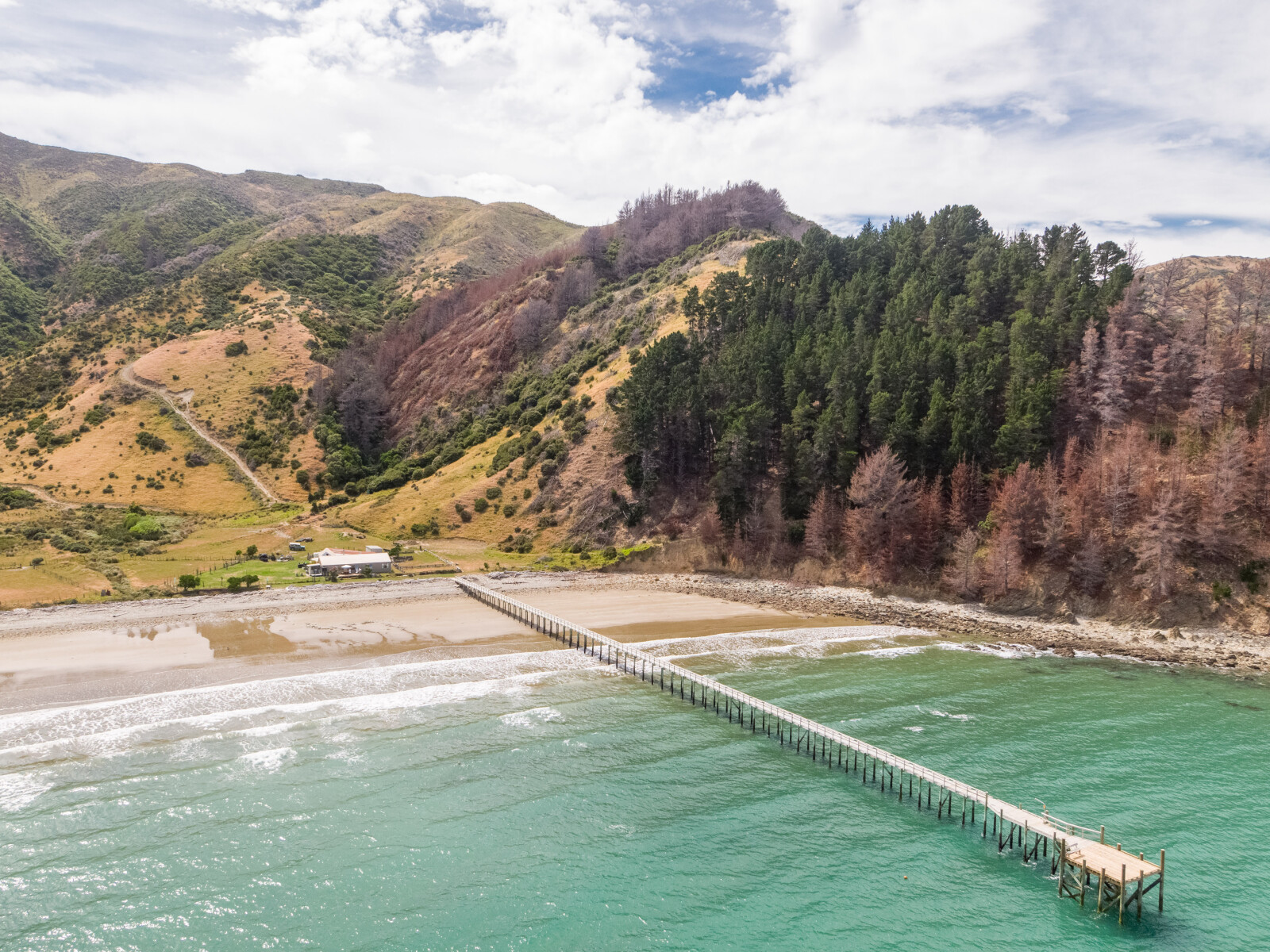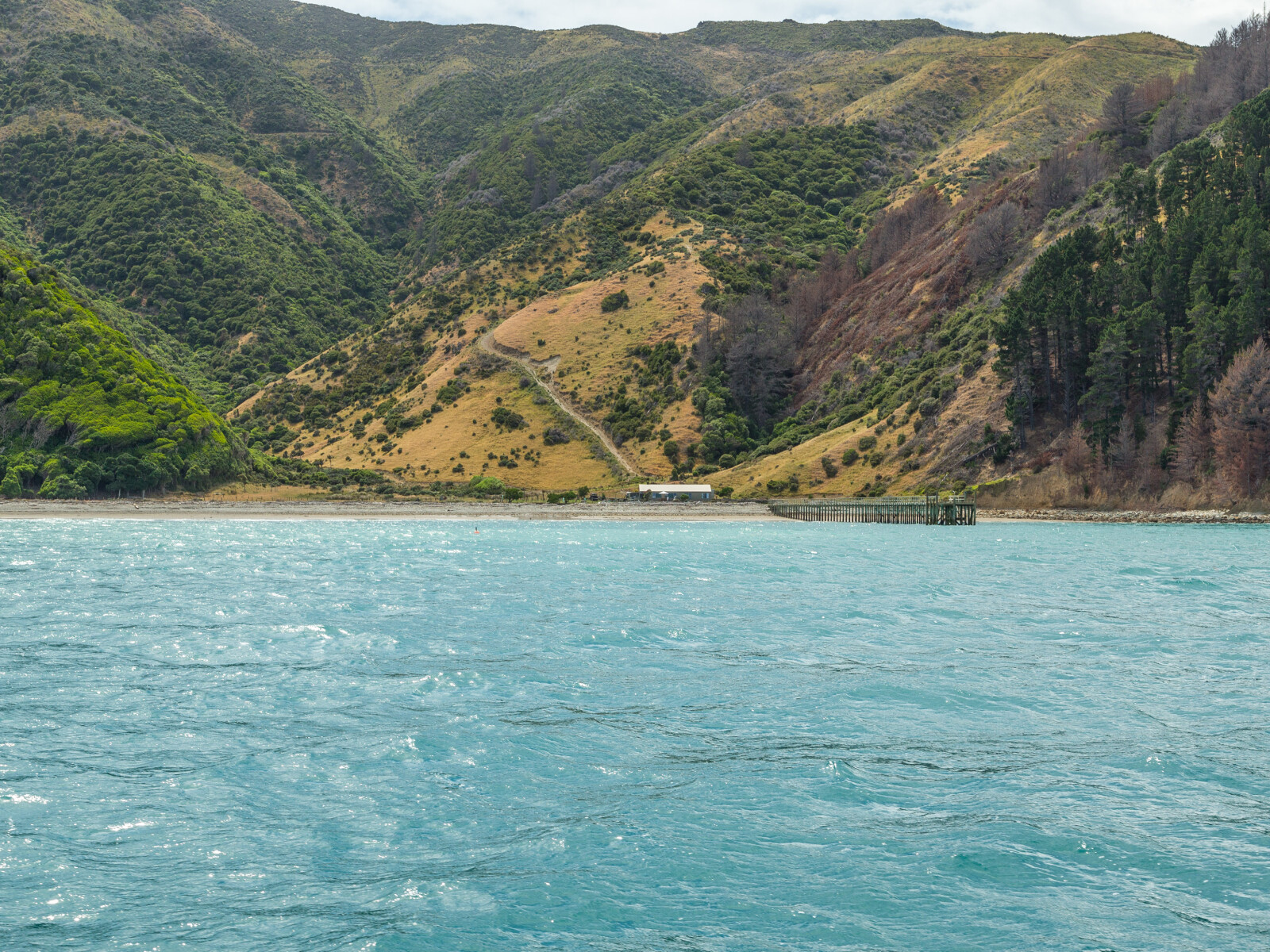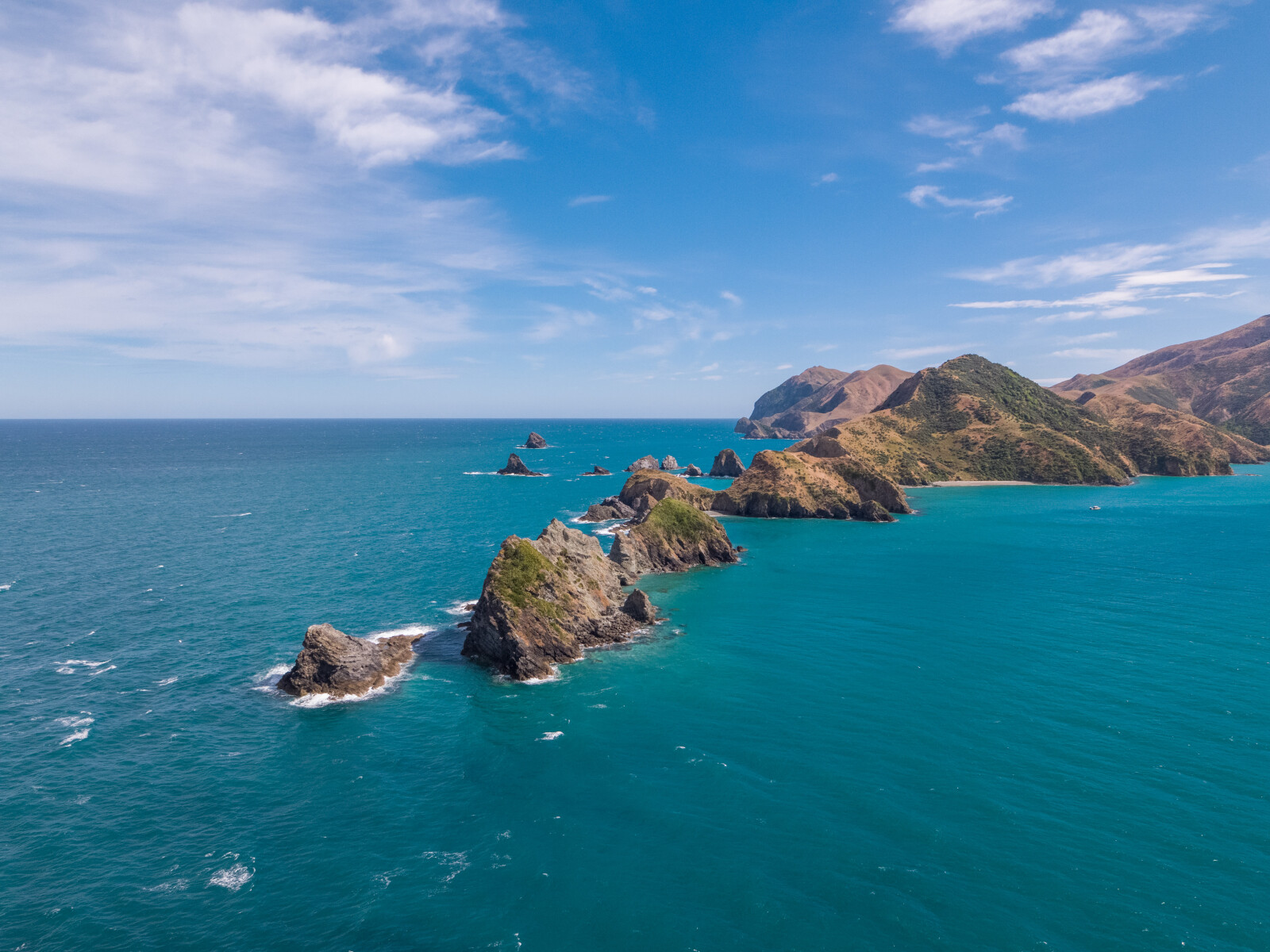The name of this bay is variously pronounced and shortened by the locals to Kupakup. Paddock Rocks close off the southern end of the bay. These straggle in an area from the shore for nearly two miles and some are nearly 30 m high. There are various passages through the rocks but none are recommended without local knowledge. The safest passage into Manuhakapakapa from French Pass is to head first to Chicots and then due north so as to enter between Paddock Rocks and Hapuka Island.
Local residents advise that Manuhakapakapa gives no real shelter in strong SW to NW conditions. Some people do however, use Opotiki Bay, which has reasonable holding in sand, but not complete shelter from wind. The remainder of Manuhakapakapa is unsatisfactory in these winds.
In NE to SE winds Otuatangi is satisfactory, although it should be used with caution as it is not sheltered from sea if the wind goes to S.
Te Horo Rock between Opotiki and Kupe Bays is about 450 m out from the shore.








